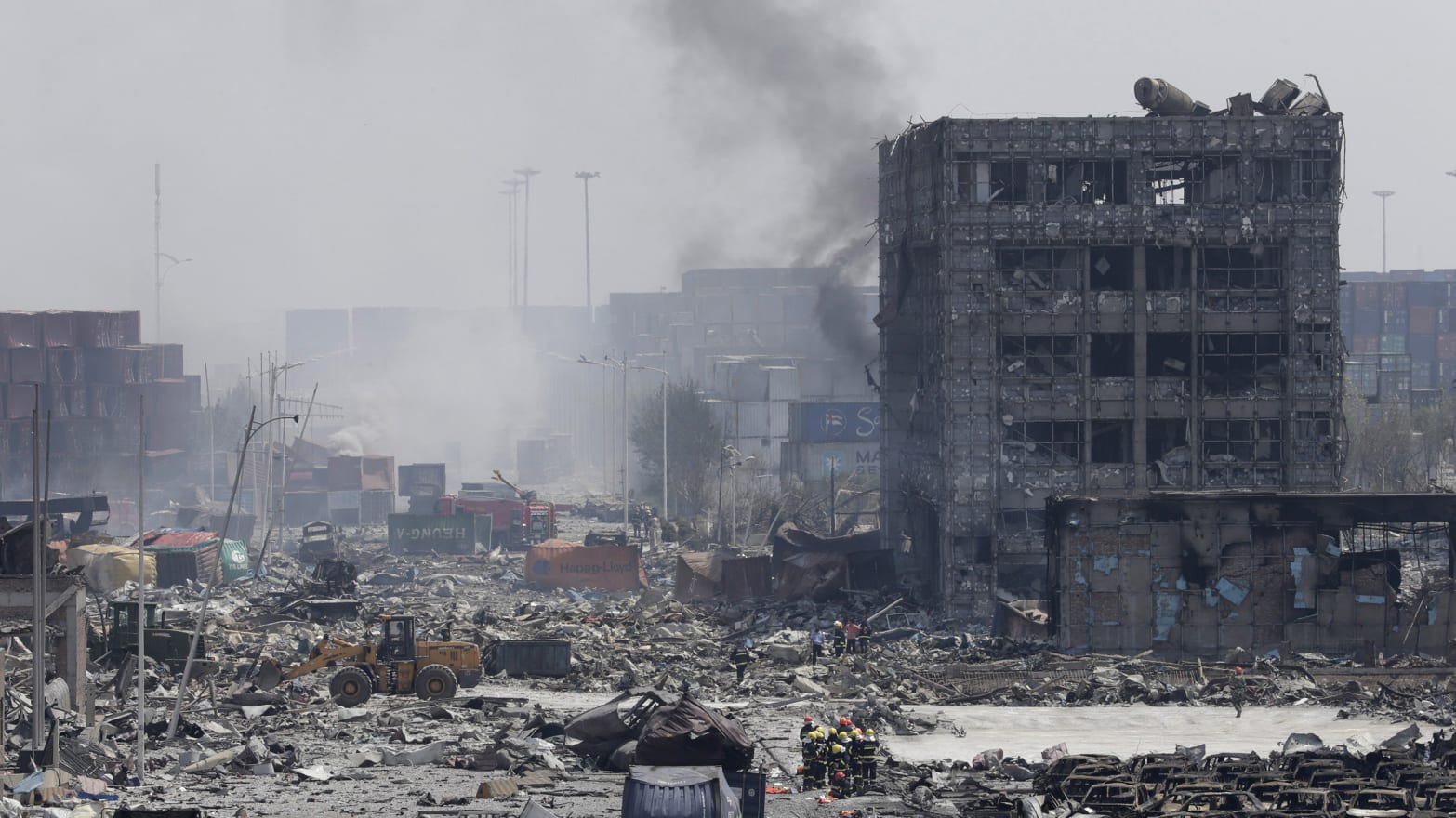The devastating blast that rocked the Chinese city of Tianjin late Wednesday night may have looked like a mushroom cloud, but it wasn’t nuclear.
That, so far, is one of the only things that’s clear about the 11:30 p.m. explosion, which was so big that a Japanese weather satellite had a clear (infrared) view of it from space. As the fires burned, secondary explosions were triggered near the initial blast, in an industrial area of a port filled with warehouses and shipping containers that were likely housing flammable material.
The pillar of flame billowed higher than the nearby high-rise buildings, and residents up to a mile away were knocked off their feet as the shockwave swept through Tianjin’s Binhai District. The China Earthquake Administration registered the blast at a magnitude of 2.3.
Thirty minutes later, a second, even more powerful blast was set off, registering a magnitude of 2.9. Authorities say it had a force roughly equivalent to 21 tons of TNT.
Even after dawn, fires were still burning at the blast site. Firefighters lost contact with at least 36 of their own as they battled to put out the flames, and at least 12 have been killed. The People’s Liberation Army has deployed 700 soldiers to Tianjin.
CCTV, China’s state-run news service, reported that at least 44 people died in the blast, and at least 520 were hospitalized, 66 of whom are in critical condition. An unknown number are still trapped under the wreckage, and rescue efforts are under way.
Photos from early Thursday morning by Beijing News show rows of parked cars with their paint burned off, tires melted, windows shattered. Office buildings nearby remain as skeletal structures.
Tianjin, a major commercial port of about 7 million people 70 miles from Beijing, is a key base for the production of petrochemicals, automobiles, and heavy industry.
And Ruihai International Logistics, which operated the warehouse where the explosion originated, is authorized to handle hazardous materials, which has fueled speculation that the blast was a chemical explosion. The company moves around 1 million tons of cargo a year.
Greenpeace Asia say they have acquired information from the Tianjin Tanggu Environmental Monitoring Station. Chemicals stored by Ruihai International Logistics include sodium cyanide (NaCN), toluene diisocyanate (TDI), and calcium carbide (CaC2). All of these chemicals are hazardous to human health upon physical contact. In particular, sodium cyanide is highly toxic, and the other two items react violently when they come into contact with water, with the risk of exploding.
Tianjin will likely see rain tomorrow, so the existence of these chemicals poses a significant threat to rescue efforts and anyone nearby.
Police first detained one representative of Ruihai Logistics for questioning in an effort to determine the cause of the blast. Then, on Thursday morning local time, company executives were taken into police custody.
Residents in Tianjin said the air in the city after the explosion had a disturbing odor, and they worried they could be inhaling harmful fumes. Local reports, however, rated the air quality at five monitoring stations in Tianjin as “normal” after the blast. Unconvinced, some residents left the city, leaving behind homes with shattered windows, caved-in roofs, the constant blare of sirens, and, in some cases, no power or water.
Four hundred others, many wearing face masks to filter the noxious air, visited hospitals where the injured are being treated to donate blood. Some drivers are volunteering their time and services to ferry family members of the victims to hospitals.
Tianjin Television isn’t reporting much about the disaster. Regular programming has been replaced by Korean soap operas to calm people down. Despite the authorities’ best efforts at controlling information, the people of Tianjin are fully aware that they’re being treated like children.
The authorities, said Chinese President Xi Jinping, must “make a full effort to rescue and treat the injured, and ensure the safety of people and their property.” The mayor of Tianjin has been at the blast site since the explosion and has announced that his three goals are to control the situation, rescue the victims, and discover the cause.
While Chinese industry is taking steps to improve its image and operation—the reviews of government officials are now tied to pollution levels in their jurisdiction, and some industries are increasingly using robots to remove the possibility of human error—poor safety standards still plague the country. In July, an illegally operated fireworks warehouse in Hebei Province exploded, killing 15 people. One year ago, a blast killed dozens at a factory that made automobile components for U.S. firms.
Shortly before 10 a.m. on Thursday two more explosions shook the Tianjin blast site.

